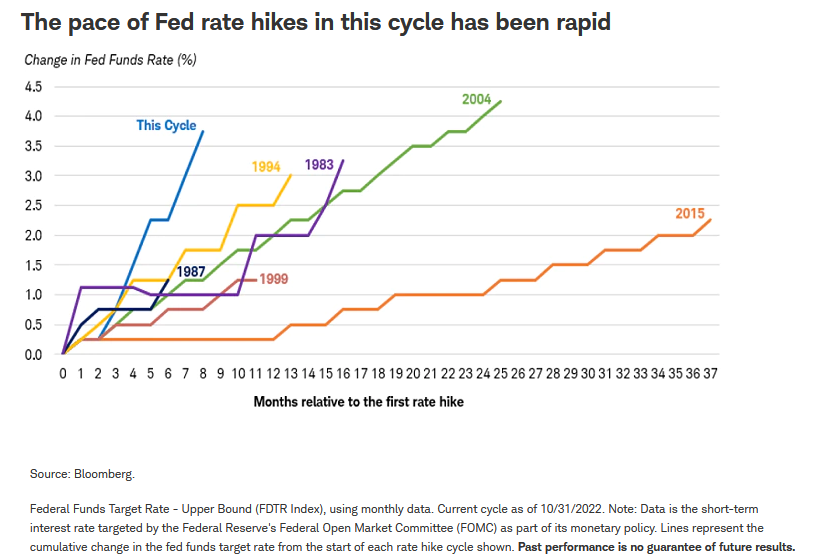Where do I find a retirement focused financial advisor?
Where do I find a retirement focused financial advisor?
Congratulations on getting to the point where you are thinking about retirement and ultimately looking for professional help to execute it successfully. I’ve personally seen many folks try to execute this phase as a “DIYer,” but we all have our blind spots. And oftentimes those blind spots can cost you in the way of underspending, overspending, higher taxes paid, and ultimately higher stress/anxiety given you are the one in charge of flying the plane.
Thanks for listening to our recent podcast episode about when you should hire an advisor. For those who have not listened to it yet, I would highly recommend you do it before reading further. If not, you can probably still learn something useful!
Without further ado, let’s jump in.
Let me start by saying that I acknowledge that this advice is not meant for everyone. I believe your life stage should dictate who you should hire and how you should engage with a financial advisor. For this reason, I want to focus solely on talking to YOU all, PFR Nation (Planning for Retirement Nation). You are likely somewhere in the ballpark of 50-60+, you’ve likely accumulated more than 7 figures for retirement, and now you are looking to make work optional. This is NOT meant for the average American who barely has $100k saved for retirement. Because of this, it’s very likely that taxes are going to be one of the largest, if not the single largest expense in retirement.
As a result of this, finding a financial advisor who is a specialist in tax optimization in retirement is a must.
Is this easy to identify? Not on the surface. However, if you find yourself interviewing a financial advisor, here are a few questions you could ask them:
- How do you help minimize taxes in retirement?
- What tools do you use to assist in this process?
- What are some of the common tax traps retirees you serve run in to?
- What tax strategies are common recommendations you make for the clients you serve?
And then I would end with the kicker…
- Do you review your client’s tax returns as part of your service?
If there is a bunch of stuttering, or a blank stare, or a “Sorry, we don’t provide tax advice” type of response, it’s time to move on. And more importantly, if you have a financial advisor, and you are paying that advisor 1% or more of your investment portfolio…
Ask yourself, is that advisor reviewing your tax returns?
Every movement of money has a tax consequence, wouldn’t it make sense for your FINANCIAL ADVISOR to know what your tax situation is? I would think so!
With that out of the way, let’s talk about the big box firms vs. independents.
Yes, I’m an independent advisor, so I’m clearly biased. However, I worked in “big box” firms the first 12 years in the industry. There are absolutely rockstar advisors that work in both models. However, there are many more phonies who don’t do real financial planning. From my personal experience, I find the latter is more common in the big box model. That is just the nature of the business. They focus on sales quotas, asset growth and other sales type metrics. They don’t necessarily focus on “value adds” for clients. So, I recognize you may work with an advisor at a big box firm. And that is OKAY! Don’t let anyone beat you up on this. However, you might ask some of those tax related questions I mentioned earlier as you think through whether you want to stay with that advisor.
We just brought on a new client that specifically said they fired their longtime advisor because he was not an expert in taxes in retirement and was more focused on “Investment Management.” It’s okay to tell your long-time advisor that you need to move on to someone who is an expert in this retirement phase and furthermore can help you minimize your potentially largest expense in retirement.
Let’s talk about credentials.
The CFP, or Certified Financial Planner designation, has been a long time “gold standard” in the advisory industry. I went through the curriculum in 2011 @ Georgetown University, and I believed at the time, and still believe, it was a MUST for financial advisors to obtain. I recall multiple times early on after obtaining the CFP clients hiring me simply because I was a CFP. Because of this, many of the big box firms have pushed their newer advisors to obtain the CFP simply for “optics.” Meaning, they weren’t really pursuing the CFP to add more value to clients, they were obtaining their CFP to increase sales and revenue from their “books of business.”
I have been involved with the CFP board’s Disciplinary and Ethics Commission, and I have seen this firsthand. I sat in on a hearing for a CFP Professional who clearly was doing wrong by his clients. I asked him “Why do you even want to continue to use your CFP marks?” His response, “Because clients expect it.” I guess what I’m saying is, just because an advisor has their CFP does not mean they are a competent, ethical, financial advisor. So, do your due diligence beyond designations.
There are also additional designations that exemplify knowledge around retirement and taxes. This list includes, but is not limited to:
- Retirement Income Certified Professional (RICP)
- Certified Public Accountant (CPA)
- Enrolled Agent (EA)
- Chartered Financial Analyst (CFA)
- Certified Private Wealth Advisor (CPWA)
- Accredited Estate Planner (AEP)
All of these designations help deepen the knowledge of specialization. In other words, the CFP is wide and shallow. Whereas a specialty designation will go narrow and deep…particularly in the areas of tax, retirement income, investments and estate planning.
So, in short, make sure the advisor is AT LEAST a CFP, but can demonstrate knowledge in the specific area you are looking for help in.
Does Location Matter?
When I first started in the industry, the optics of a fancy office with mahogany desks and a city view were very important. I remember advisors were so hell bent on looking the part that they spent THOUSANDS of dollars on expensive suits and watches so their clients thought they were successful. I always thought this was a bit disingenuous. However, as a young whipper snapper early in my career, I sort of fell into this trap. I did well as a 21-year-old coming out of college, especially entering the work force in the worst recession of our lifetime. I bought a fancy car, wore nice suits and even bought a few expensive watches. However, it all changed for me when I moved my office to a satellite office in Fairfax, VA. I looked up to two of the advisors there (Rob and Nolan) and I wanted a practice like theirs. They weren’t “salesmen,” they were true advisors. True fiduciaries. However, I noticed that I was driving a nicer car than both of these two! They were the ones that kept me in check and made me realize that we need to practice what we preach. And what they preached was sound money management. Not overspending. Not driving fancy cars just for the optics. Instead, they used their money wisely to build multi-generational wealth and make an impact on their clients along the way. So, after I totaled my fancy sports car one night in 2012, I bought a Hyundai Sonata and quit worrying about buying fancy things. That still bleeds into how I manage my money today. I drive a Honda, my wife drives a Honda, and we don’t buy fancy clothes or unnecessary frivolous things. Sure, we do live a nice lifestyle. We love to travel, we have a nice home, and I love to play golf. However, we are pretty darn good about being a good steward of the blessings we have.
What does this have to do with hiring an advisor who is local to you? Everything!
After the pandemic, people began to get comfortable with doing business online. Heck, you couldn’t even meet with your advisor in the office during 2020 if you wanted to. This made me realize. Wow. I can do this from anywhere. I don’t need to pay for a fancy office downtown just for the optics, because my clients don’t care about the optics. They care about value! They care that their advisor is doing right with their money and making sure they are capitalizing on opportunities that help achieve their goals.
And there are many other advisors around the country who think the same way as we do.
So, if you are comfortable with it, ignoring the zip code of your advisor’s office can help open the door to find an advisor that TRULY fits the profile you are looking for!
With that being said, if an “in person” relationship is important, just make sure to do the same due diligence I mentioned earlier prior to hiring that advisor, and don’t just take a recommendation from a friend who has no idea what your financial situation looks like.
Ok, let’s get to it. Here are some places I would go to find an advisor (in no particular order):
National Association of Personal Financial Advisors (NAPFA)
NAPFA has been the gold standard to find a “Fee Only” financial advisor. These are advisors that cannot receive any third-party compensation and are always held to the fiduciary standard. This does help to reduce, but not eliminate, conflicts of interest. Additionally, the default search bar does filter by Zip Code or Location. So, if you are hellbent on finding a local advisor that you can see face to face, this would be a great place to start.
Fee Only Network
https://www.feeonlynetwork.com/
This is really a spin-off from NAPFA, so I’m not sure how different your search results will be. However, this is another place to search for a fee only financial advisor, if that is important to you. Additionally, there are some additional filters that allow you to search for firms virtually as well, which I think is useful.
XY Planning Network
https://connect.xyplanningnetwork.com/find-an-advisor
XY Planning Network was founded by Michael Kitces and Alan Moore in an effort to serve generations X and Y. However, many of the advisors also serve retirees/near retirees. And frankly, Gen X is getting close to retirement now anyhow with the oldest Gen Xers turning 60 next year!! XY Planning Network has a great search tool to filter by a variety of different search criteria, including specialty/niche. They also have some qualitative search criteria as well that may or may not be important to you. I will also note that the majority of XY Members that I am aware of operate virtual, but some have a hybrid model. If you are comfortable with a virtual relationship, that won’t be an issue. However, if you do prefer face-to-face or hybrid, you can also filter by location.
Financial Planning Association (FPA)
https://www.financialplanningassociation.org/practice-support/plannersearch
The FPA claims to be the lead trade association supporting the mission of Certified Financial Planner (CFP) professionals. You must go to the “FPA Planner Search” website in order to search for an advisor. The search tool is primarily geared towards location only, not necessarily niche or expertise, for whatever that is worth.
Unlike NAPFA, Fee Only Network and XY Network, FPA members do not have to be “Fee Only.” This means they can charge fees, commissions, or both. I am not saying this is necessarily good or bad, but if you want to avoid a hard sell insurance and annuity products, you’ll have to be keep your guard up. Or, you can search one of the other sites for a fee only advisor.
The CFP Board itself
https://www.letsmakeaplan.org/
Naturally, if you are looking for a CFP professional, you can go directly to their site and search for an advisor. You can toggle by location, name and service specialties. It’s not the most robust tool, but if you want to ensure your advisor is in fact a CFP professional, this is a good way to confirm that information.
Flat Fee Advisors
https://www.flatfeeadvisors.org/
There has been a big shift in the industry to fee-transparency (FINALLY!). The days of charging 1% on $3mm of assets solely for investment management are going by the wayside. If you calculate that fee, it’s $30k/year for a service that should cost closer to 0.5%/year. Instead of charging a %, many advisors, including our firm, quote the fee in dollar terms. This creates more transparency and defines what exact services you may or may not be receiving. I’m not going to say % of AUM is good or bad. Or that flat fee is good or bad. We choose to charge flat fees because of the clients we serve ($1mm – $5mm) and how we serve them. If you hire an advisor who charges a %, make sure they are also going to help in other areas beyond investment management (particularly in cash flow planning and taxes).
Additionally, if you do not want to have an investment management relationship but still need financial advice, hiring an advisor who can charge without managing investments might be important to you. The flatfeeadvosrs.org website could be a good place to search for one of these types of firms.
Podcasts and YouTube
When I first started in the industry in 2008, the motto was, “See people or fight to see people.” “See people” meant door knocking or meeting with family/friends/clients to try to drum up business. “Fighting to see people” meant cold calling or networking. And truthfully, the MAJORITY of the advisors in my office and offices around the country were focused mostly on these efforts. It was a sales-focused culture. With that being said, new business was the lifeblood. Eat what you kill.
Podcasting and YouTube has allowed me to spend ZERO time cold calling, sending mailers, hosting seminars or webinars for the purpose of drumming up business etc. Instead, I have chosen to focus on content creation as my medium of new business generation. Additionally, the creation of content allows me to further sharpen my skills and knowledge on topics that are important/relevant to the clients I serve.
So, if I were looking for an advisor, I would listen to their podcasts, watch their videos, and read their articles to get a feel for their knowledge. In addition, you can get a feel for their communication style to see if it resonates. That way, you sort of know what you are getting prior to engaging in a relationship. This is a great benefit to you as a consumer who may or may not be comfortable reaching out to a stranger online. I’ve had multiple clients hire me after listening to my podcasts and they all said they felt like they already knew me, which was pretty cool.
If the advisor isn’t podcasting or creating content, that’s okay. Not everyone is good at this and frankly the advisor can still be a rockstar despite not being a content creator.
Thanks for reading my rant about finding a financial advisor.
Hopefully this helps you in your search to find the right fit to help you and your family achieve work optional.
If you have any questions for me directly, feel free to send me an email: Kevin@imaginefinancialsecurity.com
If you are interested in working with me 1×1, we are still taking on clients for 2025. You can start by visiting “Our Process” page on our website to learn more: “Our Process”
-Kevin Lao






































